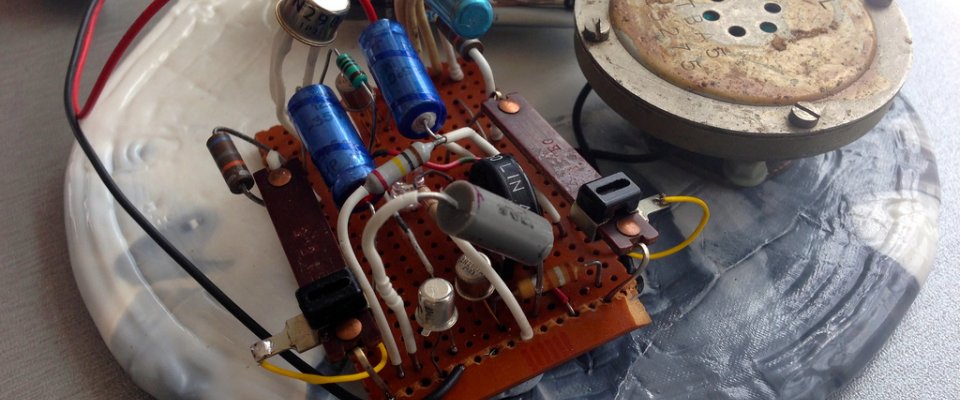Recreating Early Digital Artworks
Sun, 01 Jun 2014

I've been doing some work at Interact Labs recently with pioneering UK digital artist Paul Brown. Paul has been creating computer-based artworks since the late 1960s and was looking for some support in recreating a couple of early artworks for an exhibition.
The first of these was an electronic piece that involved sequencing lights and a tone generator that Paul first showed in the 1970s. While the electronic components needed to remake the piece are still available, modern components don't have the "aesthetic" appeal of the originals. Local electronics expert Tony Abbey was brought in to help and was able to source some lovely old transistors, resistors and capacitors that enabled him to recreate a great-looking new prototype of the artwork. The only real difference from the original is the use of LEDs rather than the old filament bulbs of the time. Paul will now be constructing a further ten versions himself.
The second was a computer-based artwork that originally ran on an early 'framestore' computer. Paul had re-coded the work in the Processing language. Processing allows you to save your program as a Linux compatible version and Paul wondered if it might be possible to run the artwork on a Raspberry Pi. As well as having the the ability to run the program, the Raspberry Pi has a composite video output that Paul hoped would look good on some early video monitors he had acquired. With a bit of configuring this worked like a dream. An artwork that once ran on a computer the size of a car is now running on one the size of a pack of cards!
Addressing the problem of how to preserve early digital artworks is going to be of increasing importance in the coming years. Technology is constantly changing and older technology becomes 'redundant' surprisingly quickly. Even I am finding that the only way to keep my artworks from the late 1990s running is to keep a stock of old computers running 1990s operating systems.
Some pictures of the work with Paul can be found on the Interact Labs photo stream. For more information about Paul Brown's work visit http://brown-and-son.com or http://www.paul-brown.com.

